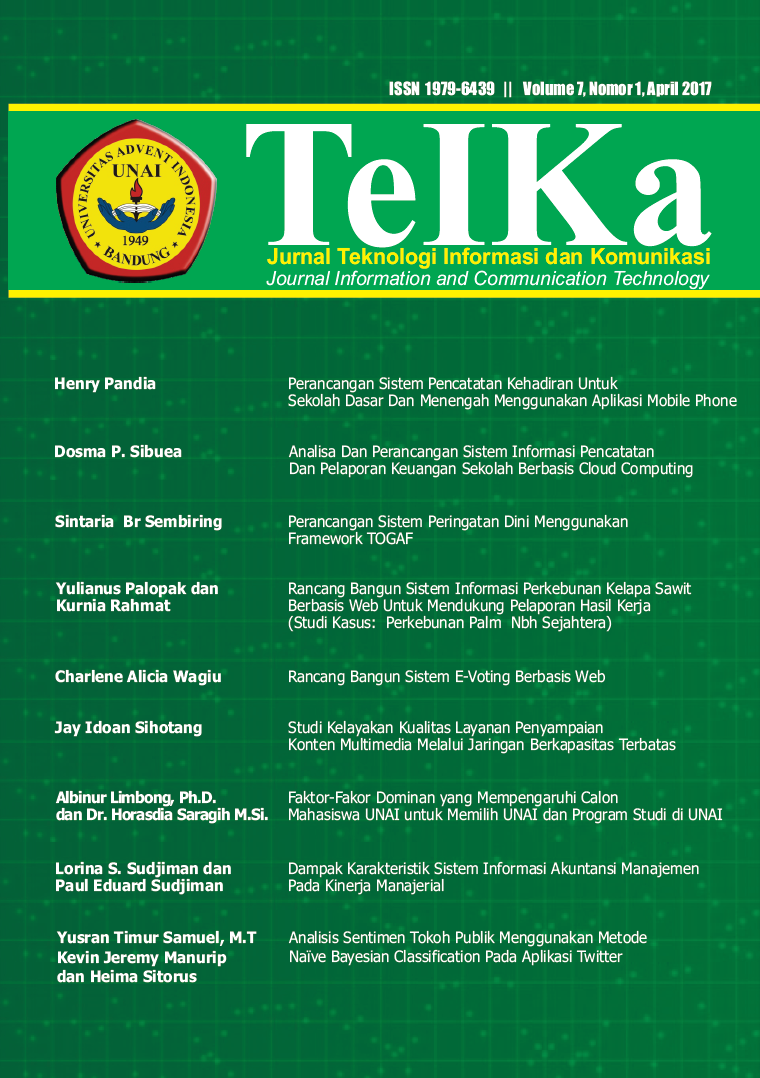DESIGN OF EARLY WARNING SYSTEM USING TOGAF FRAMEWORK
Keywords:
Enterprise Architecture, TOGAF, Framework, Disaster Prevention, Information SystemAbstract
The geographical position of Indonesia led to Indonesia is a country with a very high incidence of disasters. Besides causing material damage, the disaster also caused fatalities. Therefore, the disaster must be handle properly to minimize the risk posed towards constitutions. However in fact, the lack of data and information, and inaccuracies lead to a slow decision-making process. This research aims to make the planning of disaster management information system architecture using the TOGAF Framework with a case study of Regional Disaster Management Agency of West Java. Information system architecture to development in this study is a tool that can used by BPBDs for developing and managing information systems for disaster management. This research resulted in the information system architecture modeled with business architecture, application architecture, data architecture, technology architecture, evaluation gap, and migration plans. Enterprise architecture modeling made to produce blueprint development of information systems for disaster management.
Downloads
Downloads
Published
How to Cite
Issue
Section
License
The submitting author warrants that the submission is original and that she/he is the author of the submission together with the named co-authors; to the extend the submission incorporates text passages, figures, data or other material from the work of others, the submitting author has obtained any necessary permission.
Articles in this journal are published under the Creative Commons Share Alike Attribution Licence (CC-BY-SA What does this mean?). This is to get more legal certainty about what readers can do with published articles, and thus a wider dissemination and archiving, which in turn makes publishing with this journal more valuable for you, the authors.
By submitting an article the author grants to this journal the non-exclusive right to publish it. The author retains the copyright and the publishing rights for his article without any restrictions.










